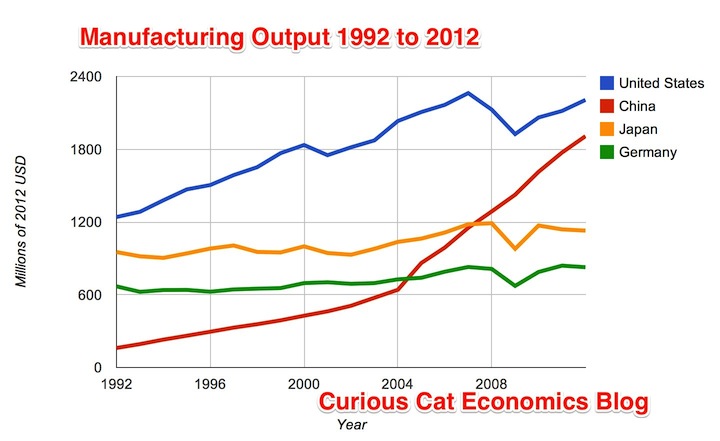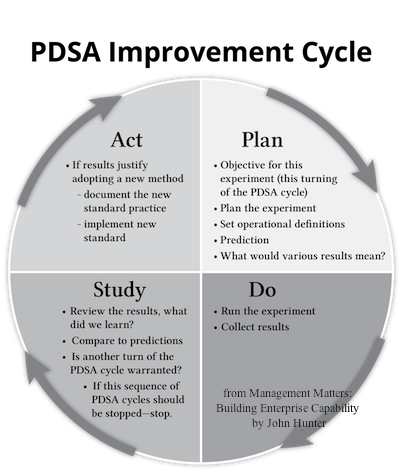I write primarily about management improvement on this blog – which makes sense given the title. In the very early days I had more on investing, economic data, science, engineering and travel. Then I created three new blogs (Curious Cat Investment and Economics Blog, Curious Cat Science and Engineering Blog, Curious Cat Travel Photos blog) and that made this blog more focused.
Even so the lines of what fits where can be a bit fuzzy and I continue to write about manufacturing, and health care, with a focus on economic data, occasionally. And that is what I am doing today while touching on management related to manufacturing a bit.
As I have written before the story of manufacturing in the USA, and globally, is greatly increased quality of processes and output as well as greatly improved productivity over the last few decades. Manufacturing output also increased, including in the USA, as I have written consistently for a decade now. For example: (Top 10 Countries for Manufacturing Production from 1980 to 2010.
Still many people have the notion that USA manufacturing has been declining, which hasn’t been true, and certainly isn’t true now (the last couple of years have been especially strong and even the general public seems to realize the idea of the USA losing manufacturing is a myth).

Based on data from the UN. See my blog post on my economics for more details on the data (to be posted next week).
The chart is impressive and illustrates the point I have been hammering home for years. The USA manufacturing base is growing and far from crumbling (job losses are deceiving as they are global and not an indication of a USA manufacturing decline). China’s manufacturing growth is incredible. China and the USA are far away the top 2 manufacturing countries. Japan and Germany make out the top 4 before a large gap which then is followed by a group of countries that are very close (Korea is 5th with less than half the production of Germany).





Managers Are Not Non-Leaders: Managers Need to Practice Things We Classify as Leadership Traits
Saying “Managers care about efficiency and leaders care about effectiveness” is like saying “Doctors care about theory and nurses care about patients.”
Managers that don’t care about effectiveness are lousy managers.
Leaders that don’t care about the gemba are lousy leaders.
Doctors that don’t care about patients are lousy doctors.
Nurses that don’t care about theory are lousy nurses.
Your role in the organization (and for the particular situation in question) and training and the situation will impact how you contribute. But the attitude that leaders are visionaries that think big thoughts, make decisions then tell everyone what to do (act as the brain for the organization) is outdated. Every list of what traits are for leaders that then contrasts them with managers that I have seen shows leadership traits managers need.
Seeking to separate leadership and management is a bad idea. If you want to have a few leadership traits that you want to focus on at various points (creating engagement, communicating a vision, building consensus, setting organizational direction) that is fine. But those things are traits managers need; they are not traits reserved for some separate leadership cadre.
And disconnected leaders that don’t understand the organization, the organizations customers etc. are not going to lead well (normally the contrast lists have the managers doing all the hands on stuff, at the gemba, with customers etc.). Nurses may not have as complete an understanding of the theories behind medical treatment decisions but they need to know a great deal of theory to do their jobs well. Everyone contributes and has different roles to play but I don’t see value in the contrast of leaders and managers mentality.
From what I have seen mainly the manager v. leader comparisons seem to be about belittling managers and elevating leaders; but leaders are this vague concept that isn’t well defined. Who are these leaders? Are they only senior executives? They can’t be managers because you are contrasting them with managers – by the contrasting model used they can’t be leaders and managers.
Continue reading →